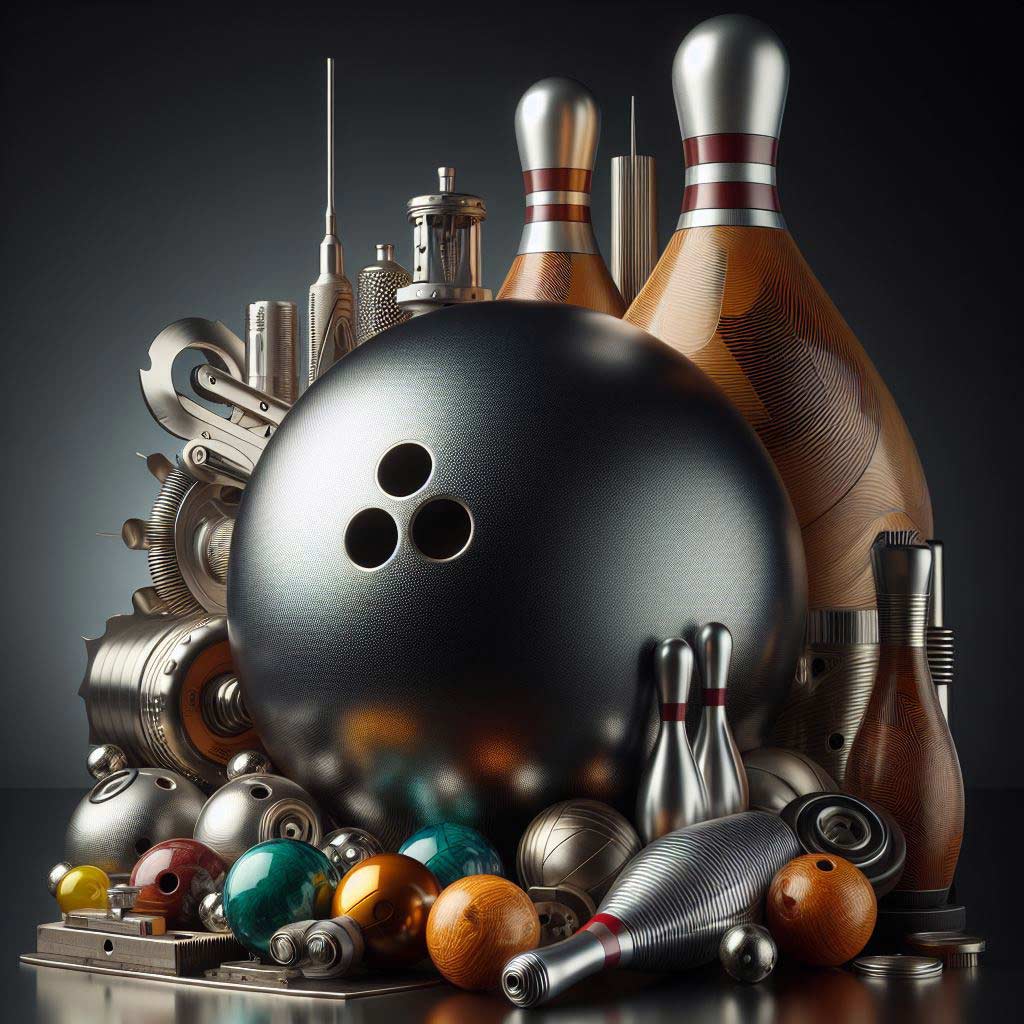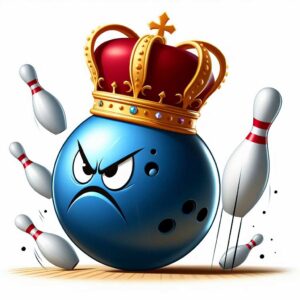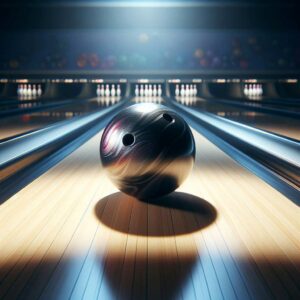When it comes to the world of bowling, one of the most common questions that often comes up is, “how heavy are bowling balls?” It’s a seemingly simple question, but the answer can be quite surprising, especially for those new to the sport.
Bowling balls come in a wide range of weights, and the specific weight can have a significant impact on your game. Whether you’re a seasoned pro or a beginner just starting out, understanding the weight of a bowling ball and how it affects your performance is crucial.
In this comprehensive guide, we’ll explore the standard bowling ball weight range, the factors that influence a ball’s heft, and how to choose the right weight for your skill level and physical abilities.
We’ll also delve into the impact of ball weight on your gameplay and provide tips on maintaining and caring for your prized possession – your bowling ball.
Understanding Bowling Ball Weights
When it comes to the weight of a bowling ball, there is a fairly standard range that most balls fall into. The typical weight range for a standard bowling ball is between 6 and 16 pounds. However, it’s important to note that this can vary depending on the league or tournament rules you’re playing in.
In some cases, leagues or tournaments may have specific weight restrictions in place. For example, some youth or beginner leagues may limit the maximum weight to 10 or 12 pounds, while more advanced competitions may allow for heavier balls up to 16 pounds.
So, what factors influence the weight of a bowling ball? There are a few key elements that come into play:
- Ball Material: The material used to construct the bowling ball can have a significant impact on its weight. Balls made from denser materials, such as resin or urethane, tend to be heavier than those made from more lightweight plastics.
- Ball Core Design: The internal design and construction of the bowling ball’s core can also affect its overall weight. Balls with a solid core may weigh more than those with a reactive or particle-filled core.
- Ball Size and Diameter: The size and diameter of the bowling ball can also play a role in its weight. Larger, standard-sized balls (typically 8.5 inches in diameter) tend to weigh more than smaller, specialty balls.
Choosing the Right Bowling Ball Weight
Selecting the right bowling ball weight is crucial for your game. The weight of the ball you choose should be based on your physical strength and abilities, as well as your skill level and bowling style.
Assessing Your Physical Abilities
When it comes to choosing the right bowling ball weight, the most important factor to consider is your own physical strength and capabilities. It’s essential to select a ball that you can comfortably handle and control throughout your entire delivery.
Factors such as your age, gender, height, and overall muscle strength can all play a role in determining the ideal ball weight for you. For example, younger or smaller bowlers may find that a lighter ball, such as 6 to 10 pounds, is more suitable, while stronger, taller individuals may be able to effectively wield a heavier ball in the 14 to 16 pound range.
It’s important to remember that the weight of the ball should never be so heavy that it compromises your form or causes you to struggle with the delivery. Choosing a weight that is within your physical capabilities will allow you to generate more power and control, ultimately leading to better scores and a more enjoyable bowling experience.
Bowling Ball Weight Recommendations
Based on your skill level and physical abilities, here are some general guidelines for choosing the right bowling ball weight:
- Beginner/Youth Bowlers (6-10 lbs): If you’re new to the sport or on the younger side, a lighter bowling ball in the 6 to 10 pound range is typically recommended. These lighter balls are easier to control and can help you develop proper technique without straining your muscles.
- Intermediate Bowlers (10-14 lbs): As you progress in your bowling skills and build up your strength, you may be able to transition to a heavier ball in the 10 to 14 pound range. This weight range provides a good balance of power and control, allowing you to generate more momentum while still maintaining accuracy.
- Advanced/Professional Bowlers (14-16 lbs): Experienced bowlers, or those with exceptional strength and technique, may opt for a heavier ball in the 14 to 16 pound range. These heavier balls can deliver more power and impact, but require a high level of skill and physical ability to control effectively.
It’s important to note that these are general guidelines, and the best way to determine the ideal bowling ball weight for you is to visit a local pro shop or speak with a qualified bowling coach. They can assess your specific needs and provide personalized recommendations based on your physical attributes and skill level.
Testing and Transitioning to Heavier Balls
When it comes to finding the right bowling ball weight, it’s essential to take the time to test and experiment. Start with a ball that feels comfortable and manageable, and gradually work your way up to heavier weights as your strength and technique improve.
One effective way to test different ball weights is to visit a pro shop or bowling alley that allows you to try out various options. Many establishments will have a range of balls available for you to pick up and get a feel for. Pay close attention to how the ball feels in your hand, how easily you can control it during your swing, and how it impacts your overall performance.
If you decide to transition to a heavier ball, it’s crucial to do so gradually. Sudden changes in ball weight can disrupt your form and technique, potentially leading to injury or decreased performance.
Instead, consider increasing the weight incrementally, perhaps by 1 or 2 pounds at a time, and allow your body to adjust to the new weight before making further adjustments.
Additionally, it’s a good idea to work on strength-building exercises, such as wrist curls or forearm exercises, to help support the increased weight and maintain proper form.
Consulting with a bowling coach or personal trainer can also be beneficial in this process, as they can provide guidance on the best ways to transition to a heavier ball safely and effectively.
The Impact of Bowling Ball Weight
The weight of your bowling ball can have a significant impact on your gameplay, affecting both your ball speed and ball roll. Understanding these impacts can help you choose the right weight for your specific bowling style and technique.
Ball Speed and Momentum
Heavier bowling balls, typically in the 14 to 16 pound range, tend to generate more momentum and power when released. This increased momentum can translate to faster ball speeds, which can be advantageous for power-based players who rely on hitting the pins with force.
On the other hand, lighter bowling balls, usually in the 6 to 10 pound range, may not generate as much raw power, but they can be easier to control and manipulate. This can be beneficial for bowlers who prioritize accuracy and finesse over pure power.
Ball Roll and Technique
The weight of your bowling ball can also influence the way it rolls down the lane. Heavier balls often have a more pronounced and consistent ball roll, which can be beneficial for hook bowlers who rely on spin and angle to hit the pins.
Lighter balls, in contrast, may be more susceptible to external factors, such as lane conditions and ball surface, resulting in a less predictable roll. This can be advantageous for straight ball bowlers who prioritize a direct, linear path to the pins.
Considerations for Different Bowling Styles
The impact of bowling ball weight can vary depending on your specific bowling style and technique. For example:
- Hook Bowlers: Heavier balls, with their increased momentum and consistent ball roll, can be highly beneficial for hook bowlers, allowing them to generate more power and control when delivering the ball.
- Straight Ball Bowlers: Lighter balls may be a better fit for straight ball bowlers, as they can be easier to manipulate and control, leading to more accurate shots.
It’s worth noting that these are general guidelines, and the optimal ball weight for any individual bowler will depend on their unique physical attributes, skill level, and personal preferences. Experimenting with different ball weights and observing the impact on your gameplay can help you find the perfect fit.
Maintaining and Caring for Your Bowling Ball
Proper maintenance and care of your bowling ball is essential to ensure its longevity and optimal performance. Here are some tips to keep your ball in top shape:
Proper Ball Storage and Transportation
When not in use, it’s important to store your bowling ball in a cool, dry place, away from direct sunlight or heat sources. Extreme temperatures can cause the ball’s materials to expand or contract, potentially altering its weight and performance.
Additionally, when transporting your ball, be sure to use a suitable carrying case or bag to protect it from scratches, dents, and other forms of damage that could affect its weight and balance.
Cleaning and Maintenance
Regular cleaning and maintenance of your bowling ball can help preserve its weight and overall performance. After each use, wipe down the ball with a clean, dry cloth to remove any dirt, oil, or residue that may have accumulated during your game.
For a more thorough cleaning, you can use a specialized bowling ball cleaner or a mild soap and water solution. Avoid using harsh chemicals or abrasives, as these can damage the ball’s surface and potentially alter its weight.
Additionally, consider having your ball professionally resurfaced or drilled at a pro shop periodically. This can help restore the ball’s original weight and performance characteristics, extending its usable life.
When to Replace or Upgrade Your Bowling Ball
Over time, even with proper care and maintenance, your bowling ball may reach the end of its lifespan. Signs that it’s time to replace or upgrade your ball include:
- Significant weight changes (more than 0.5 lbs) due to wear and tear
- Damaged or cracked surface that affects the ball’s performance
- Outdated technology or design that no longer aligns with your bowling style
- Inability to generate the desired power, control, or ball motion
When it comes time to replace or upgrade your bowling ball, consider visiting a pro shop or speaking with a qualified bowling professional. They can assess your current ball, provide recommendations on suitable replacements, and help you make an informed decision that aligns with your skill level and bowling goals.
Conclusion
The weight of a bowling ball is a crucial factor that can have a significant impact on your gameplay and overall performance. By understanding the standard weight range, the factors that influence ball weight, and how to choose the right weight for your skill level and physical abilities, you can make informed decisions that will help you excel on the lanes.
Remember, the key to finding the perfect bowling ball weight is experimentation and a willingness to adapt as your skills and strength evolve. With the right ball weight, proper technique, and a dedication to maintaining your equipment, you’ll be well on your way to reaching new heights in the sport of bowling.
So, the next time someone asks you, “how heavy are bowling balls?”, you’ll be equipped with the knowledge to provide a comprehensive and insightful answer. Happy bowling!





